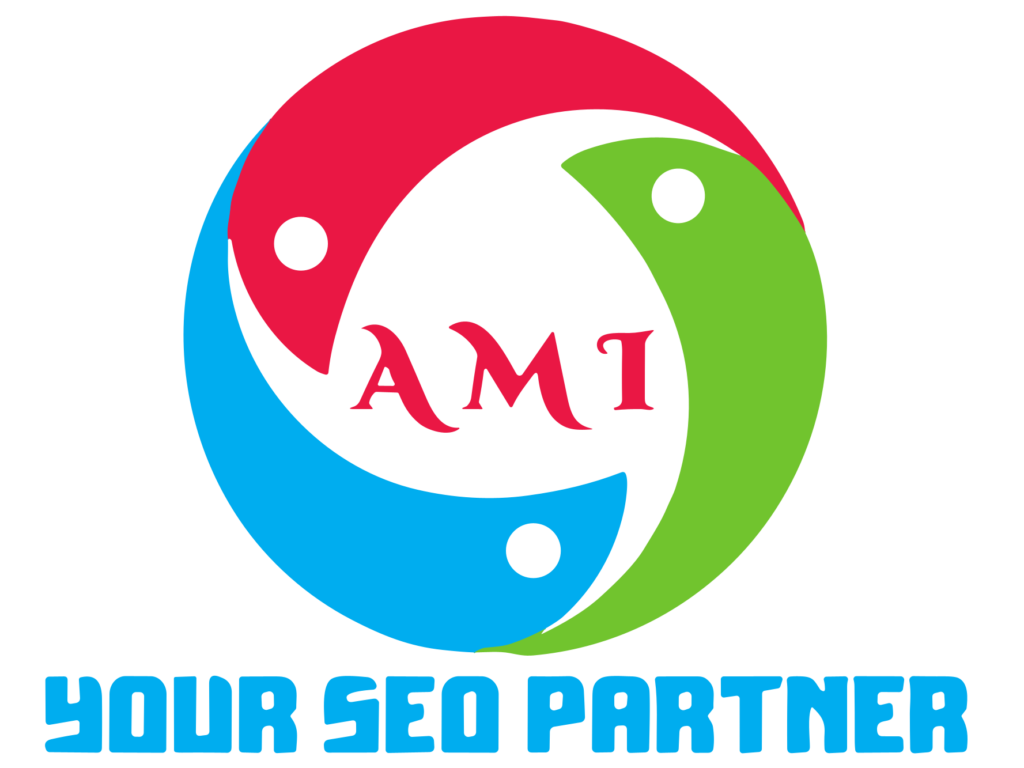To get your website ranking, focus on high-quality content and effective SEO strategies. Optimize your site for search engines.
A high-ranking website attracts more visitors and potential customers. Start by creating valuable, engaging content that addresses your audience’s needs. Use relevant keywords naturally within your text to improve search engine visibility. Ensure your website is mobile-friendly, fast-loading, and easy to navigate.
Build backlinks from reputable sources to enhance your site’s credibility. Regularly update your content to keep it fresh and relevant. Utilize social media and email marketing to drive traffic to your site. Monitor your website’s performance with analytics tools and adjust your strategies accordingly. By following these steps, you can improve your website’s ranking and achieve long-term success.
Keyword Research
Keyword research is the cornerstone of any successful SEO strategy. Finding the right keywords can help your website attract the right audience. This section will guide you through the essential steps of keyword research.

Finding The Right Keywords
To start, think about what your audience is searching for. Put yourself in their shoes. Write down words they might use. Use these steps to find the best keywords:
- Brainstorm a list of words related to your topic.
- Ask friends or family what they would search for.
- Look at competitor websites to see their keywords.
These steps will give you a solid list of potential keywords. Now, let’s move on to using tools to refine this list.
Using Keyword Tools
Keyword tools can help you find the most effective keywords. They show you search volume and competition levels. Here are some popular tools:
| Tool | Features |
|---|---|
| Google Keyword Planner | Free, shows search volume, suggests related keywords |
| Ahrefs | Paid, detailed keyword analysis, competitor insights |
| SEMrush | Paid, keyword difficulty, organic search data |
Using these tools, you can find keywords that are both relevant and popular. This will help you optimize your content for better rankings.
On-page Seo
On-Page SEO is vital for getting your website to rank higher. It involves optimizing individual pages to earn more relevant traffic. Here are some key aspects to focus on.
Optimizing Content
Your content must be relevant and valuable to your audience. Use keywords naturally in your text. Avoid keyword stuffing. Ensure your content answers questions your audience may have. Break up long paragraphs for easy reading.
- Use headers and subheaders to organize content.
- Include bullet points for key information.
- Use images and videos to make content engaging.
Meta Tags Importance
Meta tags help search engines understand your content. The title tag is the most important. It should be unique and include your main keyword.
| Meta Tag | Description |
|---|---|
| Title Tag | Shows in search results and must be unique. |
| Meta Description | Summarizes the page content. It should be enticing. |
| Header Tags (H1, H2, H3) | Organize content and include keywords. |
Use these tips to improve your On-Page SEO and rank higher.
Quality Content
Quality content is key to ranking your website higher. It attracts visitors and keeps them engaged. Search engines prioritize websites with valuable and in-depth content. Let’s explore how to create quality content.
Creating Valuable Content
Creating valuable content means providing information that your audience needs. This can be done through:
- Researching keywords that your audience searches for.
- Answering common questions related to your topic.
- Providing solutions to problems your readers face.
Use these tips to ensure your content adds value:
- Write clear and concise sentences.
- Use bullet points and lists for easy reading.
- Include relevant images and videos.
Content Length And Depth
Content length and depth play crucial roles in ranking. Longer content often ranks higher as it provides more value. Aim for at least 1,500 words per post.
| Content Type | Recommended Length |
|---|---|
| Blog Post | 1,500-2,000 words |
| Tutorial | 2,000-3,000 words |
| Product Review | 1,000-1,500 words |
Depth means covering your topic thoroughly. Break down complex ideas into simple steps. Use examples and case studies to illustrate points. This helps readers understand and trust your content.
Technical Seo
Technical SEO refers to optimizing your website for search engines. It involves improving the technical aspects to enhance its visibility and ranking. The focus is on making your site faster, easier to crawl, and more understandable for search engines.
Improving Site Speed
Site speed is crucial for both user experience and search engine ranking. A faster site keeps users engaged and reduces bounce rates.
- Optimize Images: Use compressed images to reduce load time.
- Enable Browser Caching: Store some data locally to speed up repeat visits.
- Minimize Code: Reduce HTML, CSS, and JavaScript files.
- Use a Content Delivery Network (CDN): Distribute content closer to users.
Google provides a tool called PageSpeed Insights. This tool helps you analyze and improve your site’s speed.
Mobile-friendly Design
Mobile-friendly design is essential for modern websites. A significant portion of web traffic comes from mobile devices.
- Responsive Design: Ensure your site adapts to different screen sizes.
- Touch-Friendly Navigation: Buttons should be easy to tap.
- Readable Text: Make sure fonts are legible on small screens.
Google’s Mobile-Friendly Test tool can help you check your site’s mobile compatibility.
| Technical SEO Factor | Importance | Tools |
|---|---|---|
| Site Speed | High | PageSpeed Insights |
| Mobile-Friendly Design | High | Mobile-Friendly Test |
Backlink Strategies
Backlinks are crucial for improving your website’s ranking. They act as endorsements from other sites. Search engines see these as a sign of your site’s credibility. In this section, we will explore effective backlink strategies to boost your site’s visibility.
Building Quality Links
Quality links come from reputable websites. These links carry more weight. Follow these steps to build quality links:
- Create valuable content: High-quality content attracts backlinks. People link to useful information.
- Guest blogging: Write articles for other reputable websites. Include a link back to your site.
- Build relationships: Connect with influencers in your niche. They may link to your content.
- Use social media: Share your content on social media platforms. It increases visibility and potential backlinks.
Avoiding Bad Links
Not all backlinks are beneficial. Bad links can harm your site’s ranking. Here is how to avoid them:
- Avoid spammy sites: Do not get links from low-quality, spammy websites.
- Stay clear of link farms: Link farms are websites created solely for link building. They are harmful.
- Monitor your backlinks: Regularly check your backlinks. Remove any bad links.
- Disavow toxic links: Use Google’s Disavow Tool to disavow harmful links.
| Good Links | Bad Links |
|---|---|
| From reputable sites | From spammy sites |
| Links with relevant content | Links from link farms |
| Natural links | Paid or forced links |
User Experience
Enhancing the user experience on your website can greatly boost your rankings. A seamless and enjoyable visit keeps users engaged, which search engines love. Below, we’ll discuss ways to enhance user experience through site navigation and readability.
Enhancing Site Navigation
Easy navigation helps users find what they need quickly. This reduces bounce rates and increases time spent on your site. Here’s how to make your site navigation user-friendly:
- Clear Menus: Use simple and clear menu labels.
- Logical Structure: Arrange pages in a logical order.
- Search Bar: Add a search bar for quick access.
- Breadcrumbs: Use breadcrumbs to show users their path.
All these elements make it easier for users to explore your site.
Improving Readability
Readability is crucial for user engagement. If your content is hard to read, users will leave. Follow these tips to improve readability:
- Short Sentences: Keep sentences short and to the point.
- Headings and Subheadings: Break content into sections with headings.
- Bullet Points: Use bullet points for lists.
- Font Size: Use a readable font size, at least 16px.
- Contrast: Ensure good contrast between text and background.
By following these tips, your content will be more readable and engaging. This keeps users on your site longer.
| Navigation Tips | Readability Tips |
|---|---|
| Clear Menus | Short Sentences |
| Logical Structure | Headings and Subheadings |
| Search Bar | Bullet Points |
| Breadcrumbs | Font Size |
| Contrast |
Improving user experience directly impacts your website’s ranking. Focus on enhancing site navigation and readability for better results.
Local Seo
Local SEO is essential for businesses wanting to attract local customers. It focuses on optimizing your website to appear in local search results. This guide will help you understand the key elements of local SEO.
Optimizing For Local Searches
To rank higher in local searches, you need to optimize your content. Use keywords that your local audience is searching for. Include your city or region in your content. Here are some tips:
- Title Tags: Include your city or area in title tags.
- Meta Descriptions: Use local keywords in meta descriptions.
- Header Tags: Add location-based keywords in H1, H2, and H3 tags.
- Content: Write about local events and news.
Google My Business
Google My Business (GMB) is a free tool. It helps businesses manage their online presence across Google. Optimizing your GMB profile can boost your local ranking. Follow these steps:
- Claim Your Profile: Visit the GMB website and claim your business.
- Complete Your Profile: Fill out all the information. This includes business name, address, phone number, and hours.
- Add Photos: Upload high-quality images of your business.
- Get Reviews: Encourage customers to leave reviews on your GMB profile.
- Respond to Reviews: Reply to both positive and negative reviews.
Use these tips to optimize your website for local searches. Your business will attract more local customers.
Social Media Integration
Integrating social media with your website can boost your search rankings. Social signals can influence search engine algorithms. Additionally, social media platforms can drive traffic to your site. Using social media effectively can help your website rank higher.
Leveraging Social Channels
To leverage social channels, first, identify where your audience spends time. Create profiles on platforms like Facebook, Instagram, Twitter, and LinkedIn. Share your website content regularly on these channels. Engage with your audience through comments, likes, and shares.
Use consistent branding across all social media platforms. This creates a cohesive online presence. Add social media buttons to your website. Encourage visitors to follow and share your content. This can increase your website’s visibility and authority.
| Platform | Best For | Tips |
|---|---|---|
| Wide audience | Post engaging content, use images and videos | |
| Visual content | Use high-quality images, stories, and hashtags | |
| Real-time updates | Tweet regularly, use trending hashtags | |
| Professional networking | Share industry news, join groups |
Content Sharing
Content sharing is key to leveraging social media for SEO. Share your blog posts, articles, and videos on social platforms. This drives traffic back to your website. Use eye-catching titles and images to grab attention.
Encourage your audience to share your content. Create shareable content by addressing common problems or questions. Use social proof like testimonials and reviews to build trust. This can lead to more shares and higher engagement.
- Share content regularly
- Engage with your audience
- Use visual elements
- Encourage audience participation
- Create high-quality content
- Use attention-grabbing headlines
- Add social sharing buttons
- Monitor your analytics
By integrating social media with your website, you can improve your search rankings. Leverage social channels and share content effectively to boost visibility. This will drive more traffic to your website and improve your SEO efforts.
Analytics And Monitoring
Analytics and monitoring are crucial for improving your website’s ranking. By tracking performance, you can make data-driven decisions. This helps you understand what works and what doesn’t.
Tracking Performance
Tracking performance helps you see how your website is doing. You can spot trends and issues quickly. Use this data to improve your site’s ranking.
Using Google Analytics
Google Analytics is a powerful tool for monitoring your website. It provides detailed reports on your site’s performance. Here are some key features:
- Audience Reports: See who visits your site.
- Behavior Reports: Understand what users do on your site.
- Acquisition Reports: Find out how visitors find your site.
Follow these steps to set up Google Analytics:
- Sign up for a Google Analytics account.
- Add your website’s details.
- Get the tracking code.
- Install the tracking code on your website.
Use the data from Google Analytics to improve your site’s content. Focus on what your audience likes. Improve areas where users drop off.
Here’s a simple table to help you track key metrics:
| Metric | Description | Importance |
|---|---|---|
| Pageviews | Number of times a page is viewed | High |
| Sessions | Visits to your site | High |
| Bounce Rate | Percentage of single-page visits | Medium |
| Average Session Duration | Average time spent on your site | Medium |
Focus on improving these key metrics. This will help you get your website ranking higher. Keep monitoring and adjusting based on the data.
Competitor Analysis
Competitor analysis helps improve your website’s ranking. By studying competitors, you gain insights into successful strategies. This helps you refine your SEO tactics.
Identifying Competitors
First, identify your main competitors. These are the websites ranking higher than you. Use tools like SEMrush or Ahrefs to find competitors. Look for sites with similar content and target audience.
Make a list of at least 5 competitors. This list will guide your analysis. Ensure these competitors are in the same niche.
| Competitor | Website URL |
|---|---|
| Competitor 1 | www.example1.com |
| Competitor 2 | www.example2.com |
| Competitor 3 | www.example3.com |
| Competitor 4 | www.example4.com |
| Competitor 5 | www.example5.com |
Learning From Competitors
Next, analyze what makes these competitors successful. Look at their keywords. Use tools to see which keywords they rank for. Compare these keywords to your own list.
- Use Google Keyword Planner.
- Check competitor blogs and articles.
- Identify common keywords used.
Examine their content structure. Notice how they format their articles. Pay attention to headings, images, and videos. This helps you understand what works well.
- Check their meta descriptions.
- Look at their URL structure.
- Study their internal linking.
Observe their backlink profile. Use tools to see where they get backlinks. Aim to get similar backlinks for your site.
Finally, learn from their social media presence. See how they engage with their audience. This can give you ideas for your own strategy.
Content Promotion
To improve your website ranking, content promotion is essential. Promoting your content ensures it reaches a wider audience. This increases traffic and boosts your search engine ranking.
Guest Blogging
Guest blogging is a powerful strategy for content promotion. Write articles for other blogs in your niche. This allows you to reach their audience and gain backlinks.
To start, identify blogs that accept guest posts. Make sure these blogs have a good reputation. Write high-quality content that provides value to their readers.
- Research target blogs
- Pitch relevant topics
- Write engaging content
Guest blogging improves your visibility and builds authority in your niche.
Content Outreach
Content outreach involves reaching out to influencers and bloggers. Share your content with them and ask for backlinks or shares. This helps in building relationships and gaining more visibility.
Follow these steps for effective content outreach:
- Identify key influencers in your niche
- Personalize your outreach emails
- Highlight the value of your content
Tools like BuzzSumo and Ahrefs can help find influencers. Craft a compelling email that grabs their attention. Explain why your content is valuable for their audience.
Effective content outreach can lead to more backlinks and higher website traffic.
Using Multimedia
Using multimedia on your website can drastically improve your rankings. Search engines favor sites with diverse content, including videos and images. Multimedia enhances user experience, increases time spent on your page, and reduces bounce rates.
Incorporating Videos
Videos engage users better than text alone. They provide visual and auditory learning, making content easier to understand. Here are some tips to optimize videos:
- Embed videos from platforms like YouTube or Vimeo.
- Use descriptive titles and tags.
- Add transcripts for accessibility.
- Ensure videos are mobile-friendly.
Image Optimization
Images make your content more appealing and break up text. Optimizing images is crucial for SEO. Follow these best practices:
- Use alt tags to describe images.
- Compress images to reduce load time.
- Use descriptive file names.
- Create an image sitemap.
| Optimization Step | Benefit |
|---|---|
| Embed Videos | Increases engagement |
| Use Descriptive Titles | Improves searchability |
| Compress Images | Reduces load time |
| Use Alt Tags | Enhances accessibility |
Seo Tools
SEO tools are essential for improving your website’s ranking. They help you analyze and optimize your website for better search engine performance.

Essential Seo Tools
Here are some tools that every website owner should use:
- Google Analytics: Tracks website traffic and user behavior.
- Google Search Console: Monitors website performance on Google.
- Ahrefs: Offers backlink analysis and keyword research.
- SEMrush: Provides detailed SEO audits and competitor analysis.
- Yoast SEO: Optimizes content for WordPress websites.
Using Tools Effectively
To maximize the benefits of these tools, follow these tips:
-
- Set Up Google Analytics
Install the tracking code on your website. Check your traffic data regularly.
-
- Monitor with Google Search Console
Submit your sitemap. Check for any errors or issues.
-
- Conduct Keyword Research with Ahrefs
Find keywords relevant to your niche. Analyze your competitors’ keywords.
-
- Perform SEO Audits with SEMrush
Run regular audits to find and fix SEO issues. Track your website’s ranking.
-
- Optimize Content with Yoast SEO
Use Yoast to improve on-page SEO. Focus on readability and keyword usage.
Content Updates
Keeping your website up-to-date is crucial for SEO. Regular content updates can improve your search engine rankings. Search engines love fresh and relevant content. This section will focus on two main strategies: Refreshing Old Content and Updating Keywords.
Refreshing Old Content
Old content can become outdated. Refreshing it can boost your rankings. Here are some steps to follow:
- Update facts and figures to current standards.
- Add new information relevant to the topic.
- Improve readability by breaking up long paragraphs.
- Include new images or videos.
For example, updating a 2018 article with 2023 data makes it more relevant. This keeps the content fresh and useful to readers. Search engines will notice these updates.
Updating Keywords
Keywords are essential for SEO. Search trends change over time. Updating your keywords is crucial. Follow these steps:
- Use tools like Google Keyword Planner to find new keywords.
- Replace outdated keywords with new ones.
- Integrate these keywords naturally into your content.
- Ensure your meta tags and descriptions are updated.
For example, a blog post about “smartphones” from 2019 might need new keywords. Replace old keywords with current trends like “best 5G smartphones 2023”. This helps your content stay relevant and searchable.
Both Refreshing Old Content and Updating Keywords are key to improving your website’s ranking. Regular updates signal to search engines that your site is active and relevant.
Structured Data
Structured data is a powerful tool for enhancing your website’s visibility. It helps search engines understand your content better. This leads to improved rankings and more targeted traffic.
Implementing Schema Markup
Schema Markup is a type of structured data. It uses a unique vocabulary to help search engines understand your content. Implementing Schema Markup can significantly boost your website’s SEO.
- Use JSON-LD format for easier implementation.
- Identify key pages to add Schema Markup.
- Validate your Schema using Google’s Structured Data Testing Tool.
Here is a basic example of Schema Markup for a product page:
{
"@context": "https://schema.org/",
"@type": "Product",
"name": "Example Product",
"image": "https://example.com/photos/1x1/photo.jpg",
"description": "This is an example product.",
"sku": "0446310786",
"offers": {
"@type": "Offer",
"url": "https://example.com/product",
"priceCurrency": "USD",
"price": "29.99",
"priceValidUntil": "2023-11-20",
"itemCondition": "https://schema.org/NewCondition",
"availability": "https://schema.org/InStock"
}
}
Rich Snippets
Rich Snippets are enhanced search results. They display additional information about your website. This can include star ratings, images, or product prices.
Rich Snippets make your website stand out in search results. They can increase your click-through rate (CTR).
To achieve Rich Snippets, follow these steps:
- Implement Schema Markup on your website.
- Focus on key areas like products, reviews, and articles.
- Test your pages using Google’s Rich Results Test.
Here is an example of a Rich Snippet code for a recipe:
{
"@context": "https://schema.org/",
"@type": "Recipe",
"name": "Best Chocolate Cake",
"image": "https://example.com/photos/chocolate-cake.jpg",
"author": {
"@type": "Person",
"name": "John Doe"
},
"datePublished": "2023-10-05",
"description": "This is the best chocolate cake recipe you will ever find.",
"recipeIngredient": [
"1 cup sugar",
"1/2 cup butter",
"2 eggs",
"1 3/4 cups flour"
],
"recipeInstructions": [
"Preheat the oven to 350 degrees F (175 degrees C).",
"Grease and flour a 9x9 inch pan."
]
}
By using structured data, you can improve your website’s ranking. This will lead to more traffic and better user engagement.
Voice Search Optimization
Voice search is changing the way people find information online. With the rise of virtual assistants like Alexa, Siri, and Google Assistant, optimizing your website for voice search is crucial. Voice search optimization helps your website rank higher in voice search results. This guide will cover key strategies for voice search optimization.
Optimizing For Voice Queries
Voice queries are different from text queries. People use natural, conversational language. They often ask complete questions instead of typing keywords. To optimize for voice queries, understand how your audience speaks.
- Use long-tail keywords that mimic natural speech.
- Include questions and answers on your website.
- Focus on local SEO if you have a physical location.
Answer common questions related to your industry. Create an FAQ section with detailed answers. This helps voice assistants find your content easily.
Using Natural Language
Natural language is key for voice search optimization. Write content that sounds like a conversation. Avoid jargon and complex sentences. Use simple words and short sentences. This makes your content more accessible.
- Start with a clear, concise question.
- Provide a direct, easy-to-understand answer.
- Use conversational tone throughout your content.
Think about how people talk. Use phrases and words they would use. This makes your content more likely to appear in voice search results.
| Text Search | Voice Search |
|---|---|
| Best pizza near me | Where can I find the best pizza near me? |
| Weather tomorrow | What will the weather be like tomorrow? |
Notice how voice searches are longer and more conversational. Adapt your content to fit this style. This helps improve your website’s ranking in voice search results.
Mobile Seo
Mobile SEO is crucial for your website’s success. Mobile devices account for over half of all web traffic. Optimizing for mobile can significantly improve your ranking. Let’s explore the key aspects of Mobile SEO.
Responsive Design
A responsive design ensures your website adapts to any screen size. This means it will look good on desktops, tablets, and smartphones. Google favors sites that are mobile-friendly.
- Improves user experience
- Reduces bounce rates
- Boosts mobile search rankings
Use tools like Google’s Mobile-Friendly Test to check your site’s responsiveness. Make sure your site loads quickly and displays correctly on all devices.
Accelerated Mobile Pages
Accelerated Mobile Pages (AMP) help your site load faster on mobile devices. AMP uses a simplified HTML version of your web pages. This reduces load times and enhances user experience.
- Improve page load speed
- Enhance mobile user experience
- Boost mobile search rankings
Implement AMP by adding the AMP HTML code to your pages. Use the tag for images and the tag for ads. Validate your AMP pages with the AMP Validator tool.
Here’s a simple AMP HTML code example:
Welcome to My AMP Page!
This is an example of an AMP page.
By implementing Responsive Design and AMP, your site will rank higher on mobile search results. This leads to more traffic and better user engagement.
Security Measures
Keeping your website secure is crucial for ranking high. Search engines favor secure websites. It builds trust with users and search engines. Let’s dive into some key security measures.
Ssl Certificates
An SSL Certificate encrypts data between your website and users. It protects sensitive information. Search engines mark sites without SSL as “Not Secure”. This can harm your ranking.
To get an SSL Certificate:
- Choose an SSL provider.
- Purchase the certificate.
- Install it on your web server.
- Update your website URLs to use HTTPS.
Many hosting providers offer free SSL certificates. Make sure to renew it before it expires.
Protecting User Data
Protecting user data is essential for website security. It helps in building trust. Here are some ways to protect user data:
- Use strong passwords.
- Update software regularly.
- Enable two-factor authentication.
- Use firewalls to block unauthorized access.
- Backup data frequently.
Implementing these measures ensures user data is safe. It also boosts your site’s credibility.
| Security Measure | Importance |
|---|---|
| SSL Certificates | High |
| Strong Passwords | High |
| Software Updates | Medium |
| Two-Factor Authentication | High |
| Firewalls | Medium |
| Data Backup | High |
Page Load Speed
Page load speed is a critical factor for website ranking. A fast website provides a better user experience. It also improves your search engine ranking. Let’s explore some effective ways to enhance page load speed.
Reducing Load Time
Reducing load time can significantly impact your website’s performance. Here are some practical tips:
- Optimize Images: Compress images without losing quality. Use appropriate formats like JPEG and PNG.
- Minimize HTTP Requests: Reduce the number of elements on each page. Combine files like CSS and JavaScript.
- Enable Browser Caching: Store web files locally on the user’s browser. This reduces the need to reload the entire page.
- Use Asynchronous Loading: Load scripts asynchronously to speed up page rendering.
Using Cdns
Content Delivery Networks (CDNs) help to distribute content globally. This reduces the distance between the user and the server. Here’s how you can benefit from using CDNs:
| Advantages | Description |
|---|---|
| Faster Load Times | CDNs serve content from the nearest server. This decreases latency and speeds up the load time. |
| Improved Reliability | CDNs distribute traffic across multiple servers. This reduces the risk of server overload and downtime. |
| Enhanced Security | CDNs provide additional security layers. They protect your site from DDoS attacks. |
Implementing these strategies can dramatically improve your page load speed. This will lead to better user engagement and higher rankings.
Seo Best Practices
SEO Best Practices are essential for boosting your website’s ranking. Following these practices helps search engines understand your content better. Implementing them can lead to increased visibility and more traffic.
Staying Updated
Search engines frequently update their algorithms. It’s crucial to stay updated with these changes. Regular updates ensure your strategies remain effective.
Use reliable sources like Google Webmaster Central Blog. Subscribe to SEO newsletters and follow industry experts on social media. This keeps you informed about the latest trends and updates.
| Source | Type |
|---|---|
| Google Webmaster Central Blog | Official Updates |
| SEO Newsletters | Email Updates |
| Industry Experts | Social Media |
Avoiding Black Hat Tactics
Avoiding black hat tactics is crucial for maintaining a good ranking. These unethical practices can lead to penalties from search engines.
- Cloaking: Showing different content to search engines and users.
- Keyword Stuffing: Overloading content with keywords.
- Buying Links: Paying for backlinks instead of earning them naturally.
Engaging in these practices risks your website’s reputation. Focus on ethical, white hat strategies for long-term success.
Frequently Asked Questions
How Do I Ranking My Website?
Optimize content with relevant keywords. Build high-quality backlinks. Improve site speed and mobile friendliness. Use meta tags effectively. Regularly update content.
How Do I Check My Website Page Ranking?
Use tools like Google Analytics, Ahrefs, or SEMrush. Enter your URL and check your website ranking report.
How Much Does It Cost To Rank A Website?
The cost to rank a website varies widely, typically ranging from $500 to $5,000 per month. It depends on competition, industry, and SEO strategies used.
What Determines Website Ranking?
Website ranking depends on quality content, relevant keywords, backlinks, user experience, mobile-friendliness, and page speed. Regular updates help.
Conclusion
Boosting your website’s ranking requires consistent effort and strategic planning. Focus on quality content, effective SEO, and user experience. Regularly monitor your progress and make necessary adjustments. Stay updated with SEO trends and best practices. With dedication, your website can achieve better visibility and attract more visitors.







